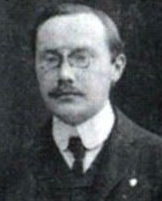Heinrich Mache facts for kids
Quick facts for kids
Heinrich Mache
|
|
|---|---|

Heinrich Mache
|
|
| Born | 27 April 1876 |
| Died | 1 September 1954 (aged 78) |
| Alma mater | University of Vienna |
| Known for | Mache (unit) |
| Scientific career | |
| Fields | Physicist |
| Institutions | Vienna Academy University of Vienna Technical University Vienna |
| Doctoral advisor | Franz Serafin Exner |
| Other academic advisors | Ludwig Boltzmann |
Heinrich Mache (born April 27, 1876 – died September 1, 1954) was an important Austrian physicist. He studied how things burn, how electricity moves in the air, and how radioactive materials work. He even had a special unit of measurement named after him, called the Mache unit, which was used for measuring radon in water. In 1915, he won a special award called the Haitinger Prize for his scientific work.
Contents
Heinrich Mache's Early Life and Studies
Heinrich Mache was born in Prague on April 27, 1876. After finishing high school, he started studying physics in Prague. There, he listened to lectures by famous scientists like Ernst Mach.
In 1894, his family moved to Vienna, and Heinrich continued his studies there. He worked with two very important physicists: Franz Serafin Exner and Ludwig Boltzmann. He earned his doctorate degree in 1898. His research for this degree was about how electricity affects gases.
Early Career and Travels
After his studies, Mache worked as an expert in photography from 1900 to 1901. He also joined an astronomy trip to India with the Vienna Academy. During this trip, he measured electricity in the air in places like the Red Sea, Delhi, Ceylon (now Sri Lanka), and Upper Egypt.
In 1901, he became qualified to teach at the University of Vienna. This meant he could give lectures and guide students.
Becoming a Professor
In 1906, Heinrich Mache became a professor at the University of Innsbruck. He stayed there for two years. Then, in 1908, he became a professor at the Technical University Vienna. He took over this position from another well-known physicist, Friedrich Hasenohrl. Heinrich Mache passed away in Vienna in 1954.
Family Connections
Heinrich Mache's wife was the granddaughter of Eduard Suess. Suess was a very famous geologist who studied the Earth's rocks and history.
Honoring Heinrich Mache
In 1966, a street in Donau City, Vienna, was named "Makegasse" (Mache Alley) to honor Heinrich Mache and his contributions to science.
Heinrich Mache's Scientific Work
Heinrich Mache was interested in several areas of physics. His main research topics included:
- Radioactivity: He studied how certain elements naturally give off energy and particles.
- Thermodynamics: This is the study of heat and how it relates to other forms of energy.
- Atmospheric electricity: He looked at how electricity behaves in the air around us.
- Combustion: He investigated how things burn, especially explosive gas mixtures.
He worked with another scientist, Ludwig Flamm, to create a theory about how explosive gases burn.
The Mache Unit
Because of his important work with radon (a radioactive gas), a special unit of measurement was named after him: the Mache (unit). This unit was used to describe how much radon was in radioactive water, especially water used for medicinal purposes.
The Mache unit measures the amount of radon in one liter of water. It tells you how much electric current that radon would produce. One Mache unit is equal to 364 p Ci per liter. Another unit, called the "eman," was used in the 1920s and 1930s. One eman was equal to 100 p Ci per liter.
Awards
- Wilhelm Exner Medal, 1927

